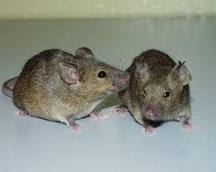Rat and Mouse Extermination

If you have a rat or mouse infestation, you may feel like your home or business has been invaded. When rats and mice get into a building, they gnaw what they need. They destroy building material, furniture, fabrics and more to make their nest, sometimes doing significant damage. Then, they gnaw through your food, contaminating much more than what they actually eat.
Rat and mouse infestations create damage and an unhealthy environment for people and pets. Because they reproduce quickly, the longer a problem goes untreated, the worse it is.
A Bit More About Rats and Mice
Rats
The Norway rat (also called the sewer rat) is a destructive pest found in urban and suburban neighborhoods. They are husky, brownish rodents that weigh about 11 ounces. They are 13 to 18 inches long, including the 6 to 8 ½ inch tail.
Rats eat and contaminate food, damage buildings and property, and spread diseases that affect people and pets. They have a keen sense of taste, hearing and smell. They will climb to find food or shelter. They can get in a building through any opening larger than ½ inch across.
The presence of rats can be detected by droppings or evidence of fresh gnawing. Railroad ties can be seen in mud and on dusty surfaces. Runways and burrows may be found next to buildings, along fences or railroad tracks, and under low vegetation and debris. 
Mice
The house mouse is a much smaller rodent, measuring 4-8 inches, including tail. House mice are white, grey, brown and/or black and are well-adapted for living year-round in homes, food establishments and other structures.
Although most people consider mice less objectionable than rats, mice are more common and cause significantly more damage. Mice reproduce frequently, giving birth to 6-10 litters each year.
The greatest and most costly problem from mice is the number of household items that must be thrown out because of gnawing damage or contamination from their droppings and urine. House mice also gnaw through electrical wiring, causing fires and appliance failure.
Mice can transmit diseases when food is contaminated with their infected feces. One of the most common diseases spread by mice is Salmonella, a bacterial form of food poisoning.
Homeowners are especially likely to notice mice during winter when they move indoors in search of warmth, food and shelter. Once mice become established inside a home, they can be extremely difficult to control.
Control Your Mouse or Rat Problem Today
At Sound Pest Management, we are a full service exterminator specializing in rat and mouse control, and we are committed to providing best-in-class service and results. With an arsenal of state-of-the-art equipment and an expert team dedicated to your peace of mind, we have the tools to end your mouse or rat problem once and for all.
